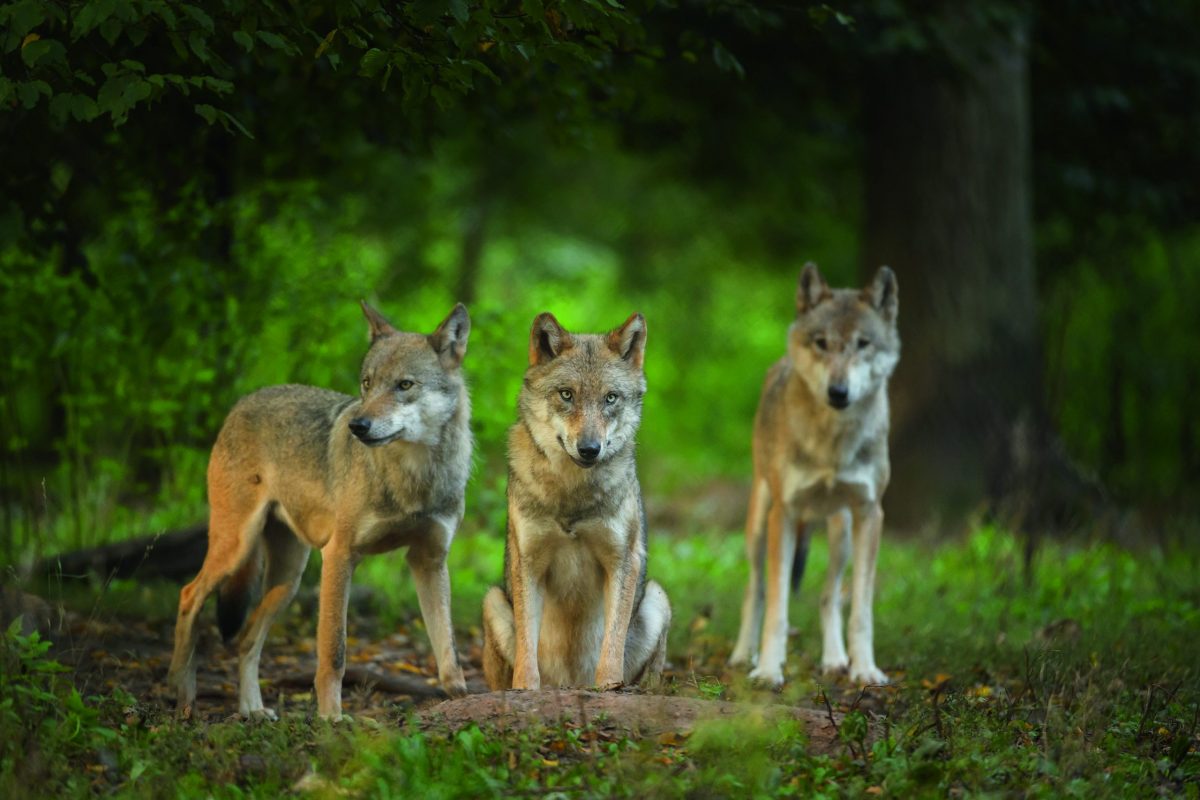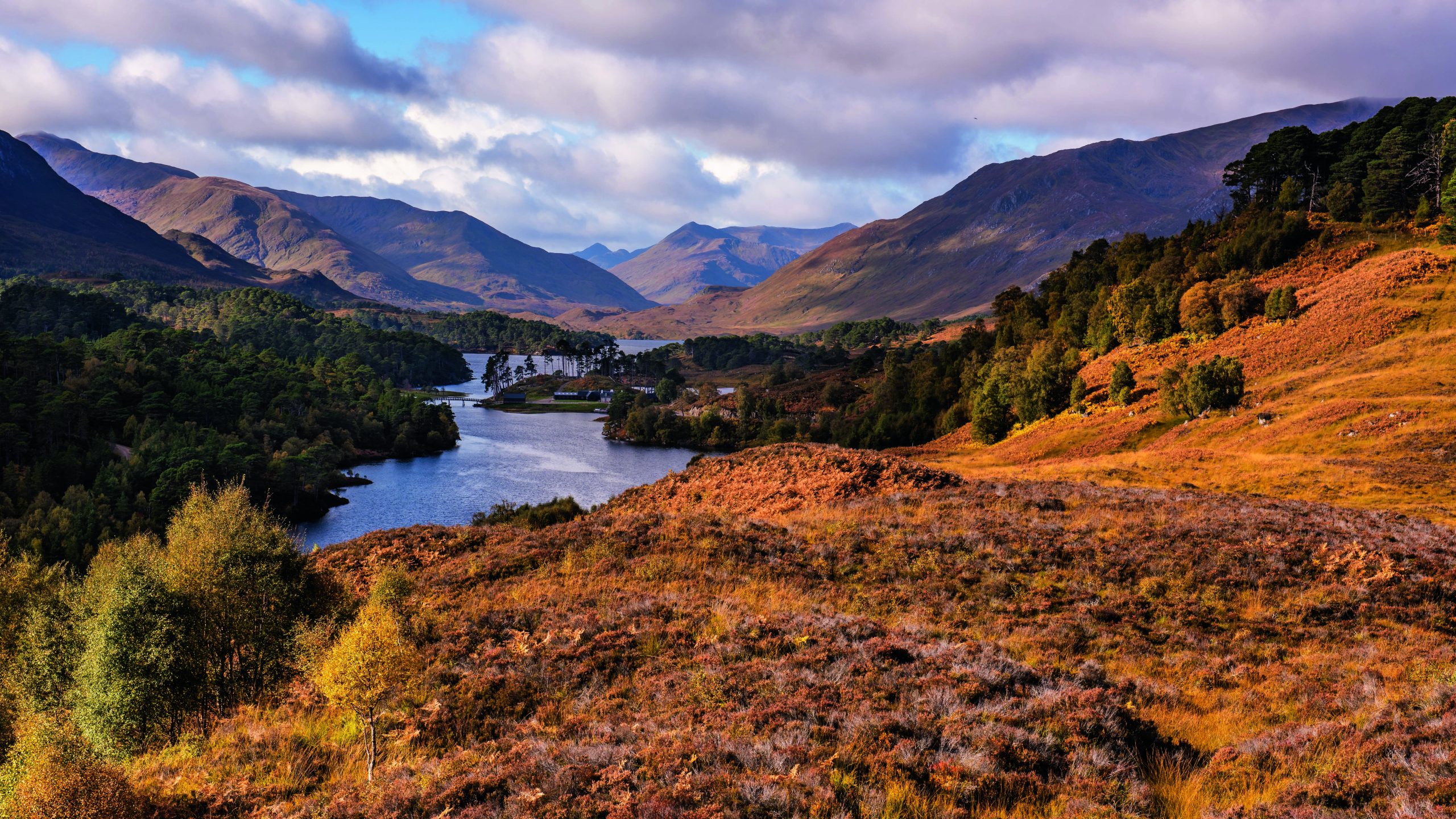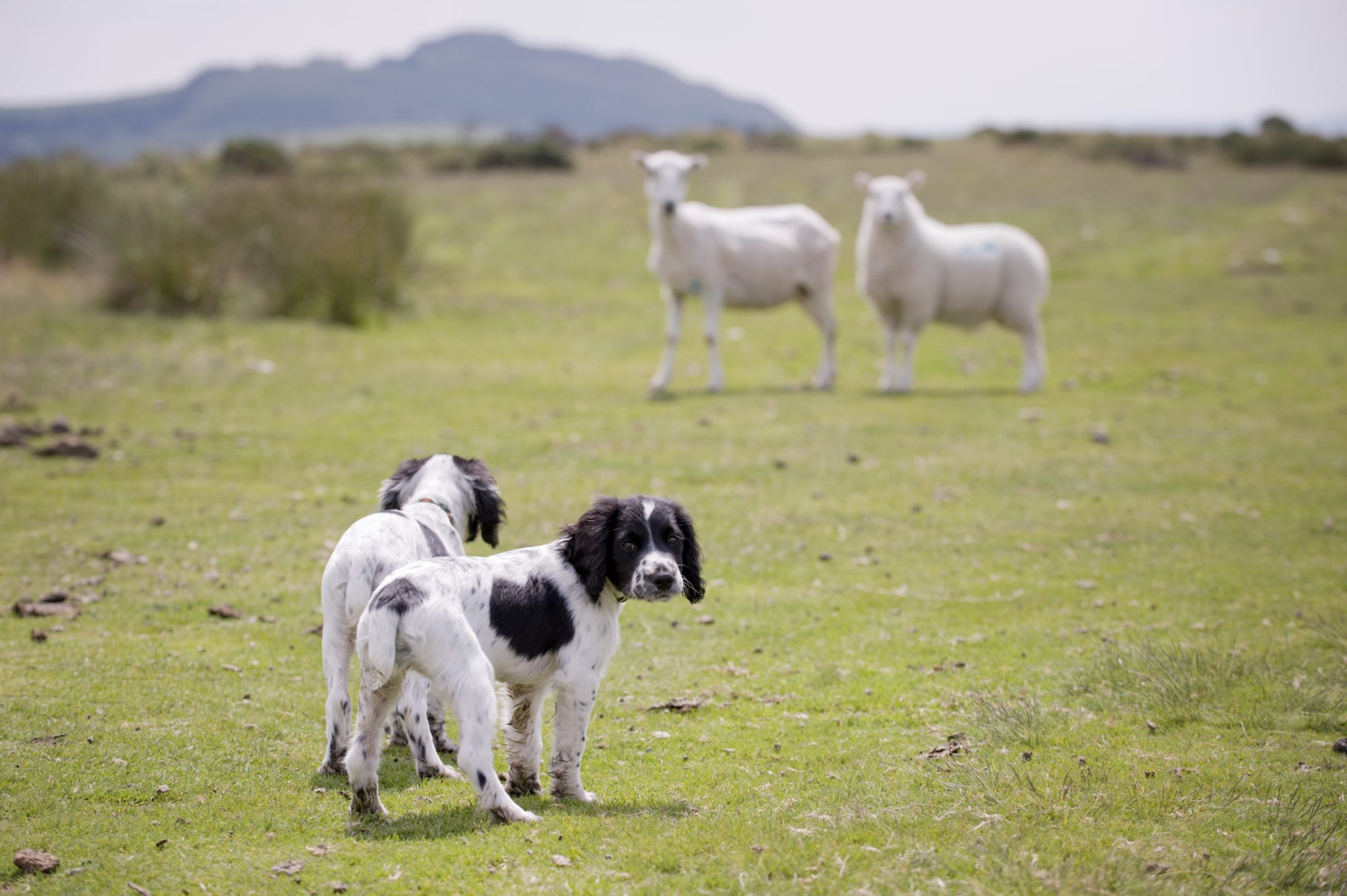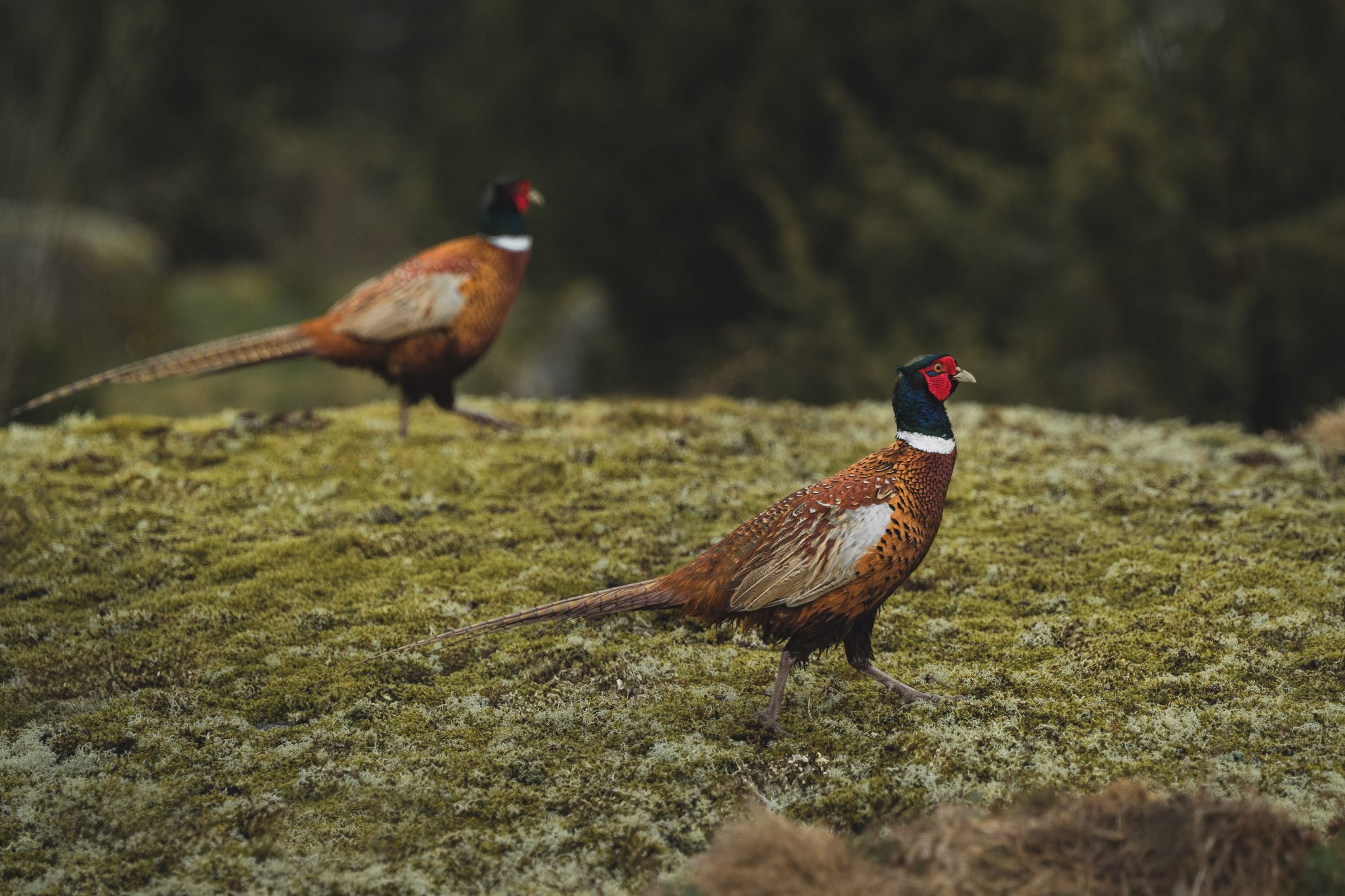Win CENS ProFlex DX5 earplugs worth £1,149 – enter here
Charles Smith-Jones discusses the problem with rewilding

It’s a fashionable word that you seem to hear everywhere these days, but if you ask 10 people to define what rewilding means, you’ll get 10 wildly different answers. To some it might be a matter of leaving nature to its own devices, while to others it suggests a more deliberate process of clearing, replanting and redefining a landscape. More yet will see it as a matter of tipping wolves or other large, and usually predatory, mammals into the countryside and seeing what happens. What is certain is that rewilding can be a much misunderstood, divisive and potentially seriously damaging business.
- What exactly is rewilding, then? Lindsay Waddell discusses it here
The widest understanding of the term ‘rewilding’ is that it is a process that seeks to return the countryside to a natural uncultivated state, usually along with the animals and plants that once inhabited it before they were driven out or exterminated. These may include apex predators that have long since disappeared for a number of reasons — and the arguments for their reintroduction almost inevitably include the control of other species that have flourished in their absence.
Why these apex predators and others have disappeared from Britain is easily explained. The lynx was probably already long gone here well before Alfred the Great assumed the Wessex throne in AD871. The wolf hung on until the 15th century in England and the last one was reputedly killed in Scotland as late as 1743. They, like so many of the other species that some people want to see returned, have one thing in common: they have competed with man.
Long gone
Of all the invasive species across the world, humans are the foremost. Roman Britain had an estimated population of less than four million, which had grown to around 27 million by the mid-18th century. Thereafter it started to increase rapidly and, with the advent of industrialisation, more than half of the UK population lived in towns. By 1901 it was up to 41 million and today it is around 68 million and projected to surpass 75 million by 2060. Britain has long since passed from being a largely rural environment into a small, heavily built-up and very overcrowded island with, on average some 281 people per square kilometre, the 21st most populous land area in the world.
The modern British countryside is not natural. It has been worked and shaped by man over many hundreds of years and very little of it would be recognisable to a pre-Roman Briton. Its development has been a response to human needs, and many of its wild inhabitants would not be here but for our assistance. It is unlikely that any Celt ever saw a brown hare or rabbit, and three of our six species of deer have only arrived in the past century or so. Even the humble house sparrow probably only came to Britain in the Late Bronze Age, attracted by human dwellings.
Reintroducing the wolf or lynx could put sheep at risk
Overall, the non-native animals and plants with us now number more than 3,000. Some were deliberately introduced while others came as accidental passengers, perhaps with food shipments or in the ballast of ships. Many have done little harm to the environment, but some are invasive and have a negative effect, threatening biodiversity, competing for resources, predating native species or causing unacceptable levels of economic damage.
The list of invasive species is long but includes the likes of mink, muntjac deer, grey squirrels, signal crayfish, Chinese mitten crabs, killer shrimp and Japanese knotweed.
We also need to get another important point straight. While advocates of high-profile reintroductions are quick to claim that we need to be preserving a species, most of those involved were never in trouble in the first place. Species such as the grey wolf and Eurasian lynx are classified as being of least concern by the International Union for Conservation of Nature.
So too are the sea eagles and beavers, which have already been returned to Britain to such great fanfare and at huge expense, nor indeed the capercaillie and wildcat whose futures are causing such concern in Scotland. ‘Least concern’ means that none of these are under any threat of extinction (the threat levels move from there through the next stages of near threatened, vulnerable, endangered, critically endangered before finally becoming extinct in the wild or extinct). They are at low risk globally; it is only here that they have gone or in decline.

The once great Caledonian Forest has been reduced to small fragments
Burgeoning
Those species that may once have roamed the British countryside in numbers are declining or no longer here for another prominent reason. Britain no longer has the vast wilderness areas that are essential for them to thrive and even the once great continuous Caledonian Forest of Scotland is reduced to just small fragments. Those species that remain and are still doing well, such as the burgeoning deer populations of some localities, are only doing so because they are able to tolerate the proximity of humans and our activities.
Much of the drive towards rewilding comes from urban thinking fuelled by pundits with a vested interest in peddling an idealised view of the natural world. Very few of its supporters make a practical contribution beyond the odd ‘like’ on a social media forum and follow a “wouldn’t it be nice to see …” philosophy. A recent tongue-in-cheek letter to a national newspaper, responding to largely urban suggestions for the introduction of wolves to control deer numbers in the Highlands, suggested a trial project in Richmond Park first. Then, the writer pointed out, the metropolitan supporters of the scheme would be in a far better position to advise and comment.
Wildlife tourism is unlikely to benefit. Wolves and lynx, for example, demand huge uninterrupted ranges and can be surprisingly elusive. Some Scandinavian friends have lived and hunted in lynx-rich country for all their lives without ever seeing a living animal; instead, they tell of local farmers having to pen their livestock at night to prevent predation and generous compensation that has to be paid if so much as a sheep is killed. And after all, if you were an apex predator, which would you prefer – the long demanding pursuit of a fit, swift deer, or an easy sheep or calf from an enclosed field?
Wolf reintroductions have certainly been cited, with justification, as helping to rebalance the ecosystem of Yellowstone National Park in the US and proponents suggest that the same might happen in Scotland’s Cairngorms National Park. However, Yellowstone has an area of almost 3,500 square miles and only a handful of permanent residents. The Cairngorms cover just 430 square miles and is home to around 18,000 people. Many of these are livestock farmers or crofters. Furthermore, although Yellowstone is a wilderness area, the US government still pays millions of dollars in compensation to the ranchers and farmers surrounding it for livestock lost to a wolf population, thought be fewer than 100.
The full effect of beavers on the British landscape have yet to be fully felt, although they are certainly back and breeding thanks to both licensed and mystery releases. The jury is currently out as far as what will happen here in the future, but already there is concern over increased flooding and landscape alteration. In 1946, beavers were deliberately introduced to Tierra del Fuego, South America, as part of a fur production initiative. With no natural predators they multiplied, destroying huge areas of forest. The effect has been likened to having bulldozers thrashing through the landscape. Unsurprisingly, they are no longer welcome.
The jury’s still out on the effect of beavers on our landscape
Problem species
Events in Ukraine have brought the importance of domestic food production to the forefront and it is time to get behind our farmers, rather than take their land away or pay them pointless millions to rewild it. The countryside is not a theme park for the urban masses. While it can still be a place for all to enjoy, it must remain primarily a living, working environment where our remaining wildlife can thrive alongside sensitively managed food production and with the intelligent management of problem species where necessary.
Creating unnecessary conflict by blindly reintroducing long-departed species will, in the long run, merely be an expensive and counterproductive indulgence largely driven by ill-advised urban sentiment. And it’s usually people most detached from the places involved and with nothing to lose personally who are the strongest supporters. Rewilding can be a lucrative business, even before you start to consider certain members of the super-rich planting acres of sterile monoculture trees in an attempt to offset the carbon footprint guilt of their jet-setting lifestyles.
The way ahead is simple. Of course we must protect our remaining rural areas and national parks, but trying to create more is pointless. Instead, let’s concentrate on preserving and improving what we have. In the meantime climate change, habitat loss, human disturbance and all the other destructive problems facing our planet are merely symptoms of a much bigger issue.
Sadly, world leaders and politicians are unwilling to address the real elephant in the room – an overwhelming global population which grows by the day. Until this nettle can be grasped, our problems will only continue to increase.
Oh, and talking of elephants, let’s not even think about rewilding them. The last of those disappeared from these parts around 115,000 years ago. Mind you, wouldn’t it be a grand sight to meet a herd coming down Fulham High Street?
Related Articles
Get the latest news delivered direct to your door
Subscribe to Shooting Times & Country
Discover the ultimate companion for field sports enthusiasts with Shooting Times & Country Magazine, the UK’s leading weekly publication that has been at the forefront of shooting culture since 1882. Subscribers gain access to expert tips, comprehensive gear reviews, seasonal advice and a vibrant community of like-minded shooters.
Save on shop price when you subscribe with weekly issues featuring in-depth articles on gundog training, exclusive member offers and access to the digital back issue library. A Shooting Times & Country subscription is more than a magazine, don’t just read about the countryside; immerse yourself in its most authoritative and engaging publication.







